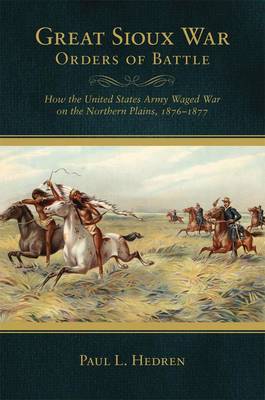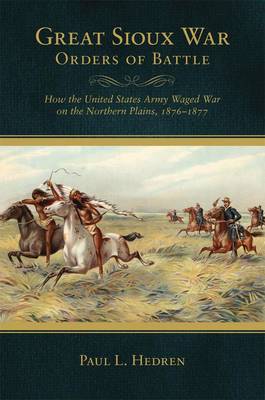
En raison d'une grêve chez bpost, votre commande pourrait être retardée. Vous avez besoin d’un livre rapidement ? Nos magasins vous accueillent à bras ouverts !
- Retrait gratuit dans votre magasin Club
- 7.000.000 titres dans notre catalogue
- Payer en toute sécurité
- Toujours un magasin près de chez vous
En raison de la grêve chez bpost, votre commande pourrait être retardée. Vous avez besoin d’un livre rapidement ? Nos magasins vous accueillent à bras ouverts !
- Retrait gratuit dans votre magasin Club
- 7.000.0000 titres dans notre catalogue
- Payer en toute sécurité
- Toujours un magasin près de chez vous
Great Sioux War Orders of Battle
How the United States Waged War on the Northern Plains, 1876-1877
Paul L Hedren
23,95 €
+ 47 points
Description
A unique resource with a new perspective on the U.S. Army in the Great Sioux War Lasting nearly two years, the Great Sioux War pitted almost one-third of the U.S. Army against Lakota Sioux and Northern Cheyennes. By the time it ended, this grueling war had played out on twenty-seven different battlefields scattered across five states, resulted in hundreds of casualties, cost millions of dollars, and transformed the landscape and the lives of survivors on both sides. It also entrenched a view of the army as largely inept. In this compelling sourcebook, Paul Hedren uses extensive documentation to demonstrate that the American army adapted quickly to the challenges of fighting this unconventional war and was more effectively led and better equipped than is customarily believed. While it lost at Powder River and at the Little Big Horn, it did not lose the Great Sioux War. In the first part of this volume, Hedren considers concepts of doctrine, training, culture, and matériel to aid understanding of the army's structure and disposition. In part two he dissects the twenty-eight Great Sioux War deployments in chronological order, including documentation of command structures, regiments, and companies employed. In the concluding section, the author addresses how an otherwise sound American army was defeated in two battles and nearly lost a third. The book also features seven helpful appendices, a glossary, and an oversized map showing forts, encampments, and battle sites. By expanding his purview to encompass all of the war's battles-along with troop movements, strategies, and tactics-Hedren offers an authoritative account of the conduct of U.S. forces in a campaign all too frequently misunderstood. Paul L. Hedren is a retired National Park Service superintendent residing in Omaha, Nebraska. He is the author of Fort Laramie and the Great Sioux War and, most recently, We Trailed the Sioux: Enlisted Men Speak on Custer, Crook, and the Great Sioux War.
Spécifications
Parties prenantes
- Auteur(s) :
- Editeur:
Contenu
- Nombre de pages :
- 240
- Langue:
- Anglais
- Collection :
- Tome:
- n° 31
Caractéristiques
- EAN:
- 9780806143224
- Date de parution :
- 15-03-11
- Format:
- Livre broché
- Format numérique:
- Trade paperback (VS)
- Dimensions :
- 155 mm x 231 mm
- Poids :
- 362 g

Les avis
Nous publions uniquement les avis qui respectent les conditions requises. Consultez nos conditions pour les avis.






